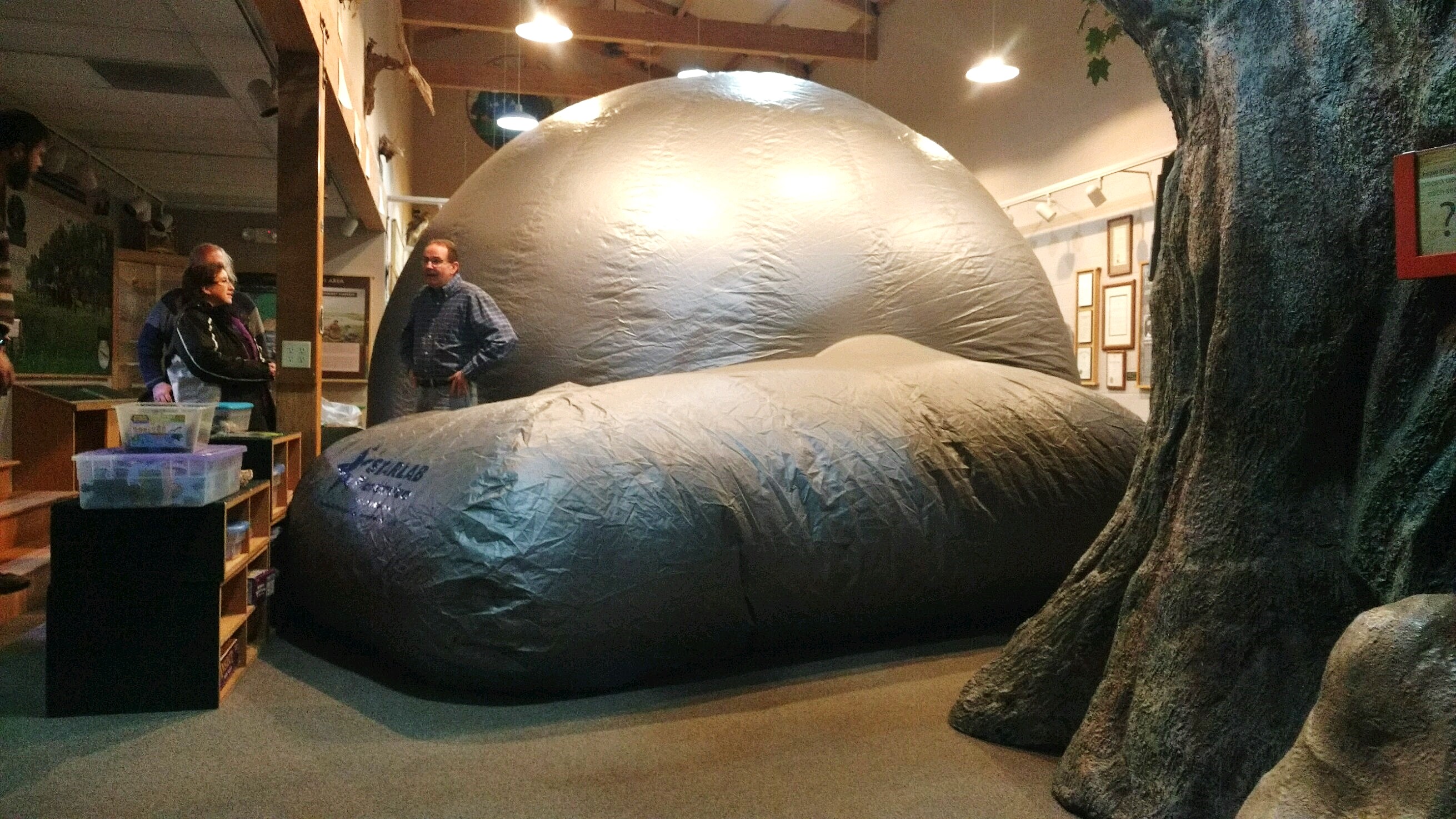By Bob Strohm
bstrohm@wbcowqel.com
Exploring the galaxy without having to venture out into the cold, Lowe-Volk Park’s Nature Center was transformed into a planetarium for the evening.
Using an inflatable planetarium, Dan Everly started with our home galaxy the Milky Way noting that the galaxy is now thought to be 50 perent larger than it was 12 years ago due to advances in star gazing technology. Moving on from the Milky Way, Everly discussed globular clusters and the new theory that the clusters were one time galaxies themselves.
After speaking about the galaxy and globular clusters, Everly next spoke about the Sun and solar system explaining to the attendees what an astronomical unit is (the distance from Earth to the Sun or approximately 93 million miles). Everly then discussed the planets, noting that Pluto is no longer considered a planet but rather a dwarf planet.
After the program Everly explained what he enjoyed most about using the inflatable planetarium.
“Watching the kids light up when you show them something cool, and knowing that you reached out and touched their education,” Everly said. “That is also the funnest part of bringing the telescope on the fourth Saturday of every month. Some people have asked, ‘What’s the neatest thing you have ever seen?’ And I say when you see the light strike the kids’ eyes and they go ‘Ahhhh,’ that to me is a wonder of the universe.”
Everly then discussed the constellations from Greek, Roman, and Native American mythologies. As Everly discussed the constellations, the images that the constellations were supposed to convey were outlined overhead inside the planetarium.
Taking his son Rolf, Adam Lehman spoke about what he enjoyed most about the interstellar program.
“The constellations, to actually see the shape of them and to have them in that perspective, I have never seen that before. So that was quite the experience, ” Lehman said.
“It was a plethora of information, but the actual physical planetarium seemed much bigger on the inside than it was on the outside, so it seemed almost extra-dimensional. It was pretty neat,” Lehman continued.
The program wrapped up with Everly showing the difference between areas that have large amounts of light pollution compared to areas where lights are less prevalent. As Everly showed the differences the stars became considerably more abundant and bright with less light pollution.
Everly explained where he utilizes the inflatable planetarium.
“I have done this program 70 times in the past year-and-a-half. Whenever we use the planetarium at schools, we need a large room like gymnasiums. Earlier today we did this program here for the home-schooled kids, and we will probably be bringing this to the Crestline Library so keep your eyes open for it.”


